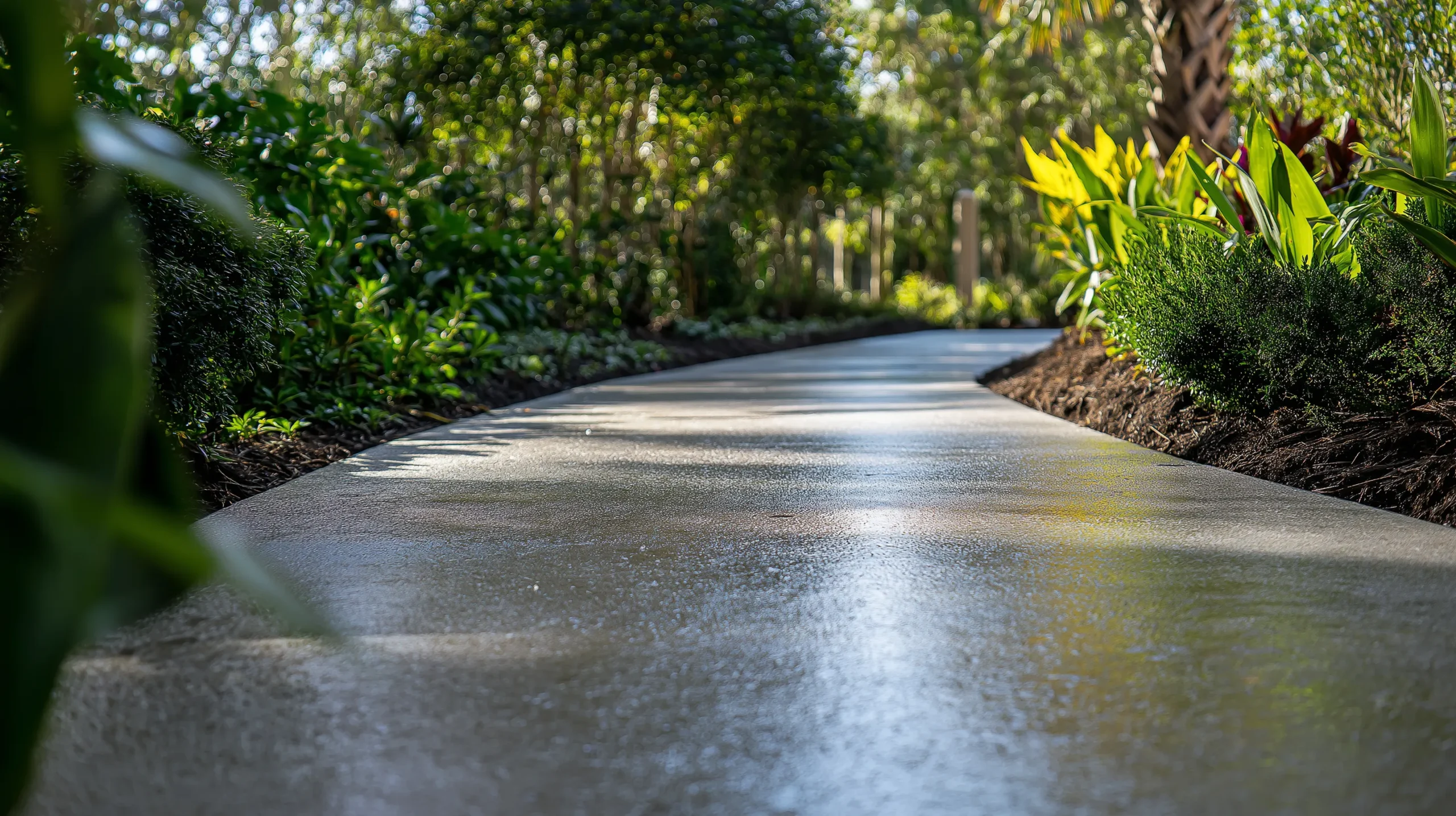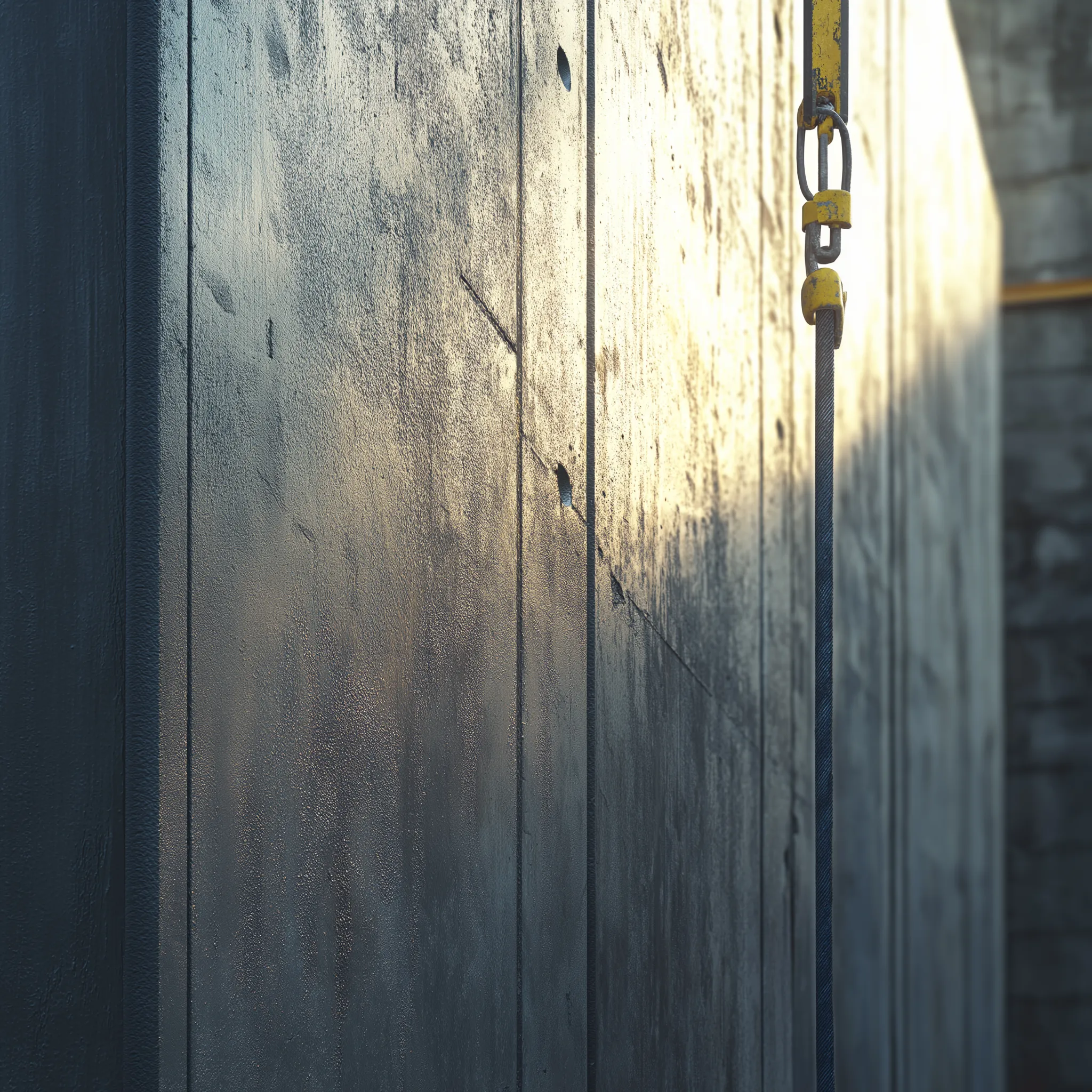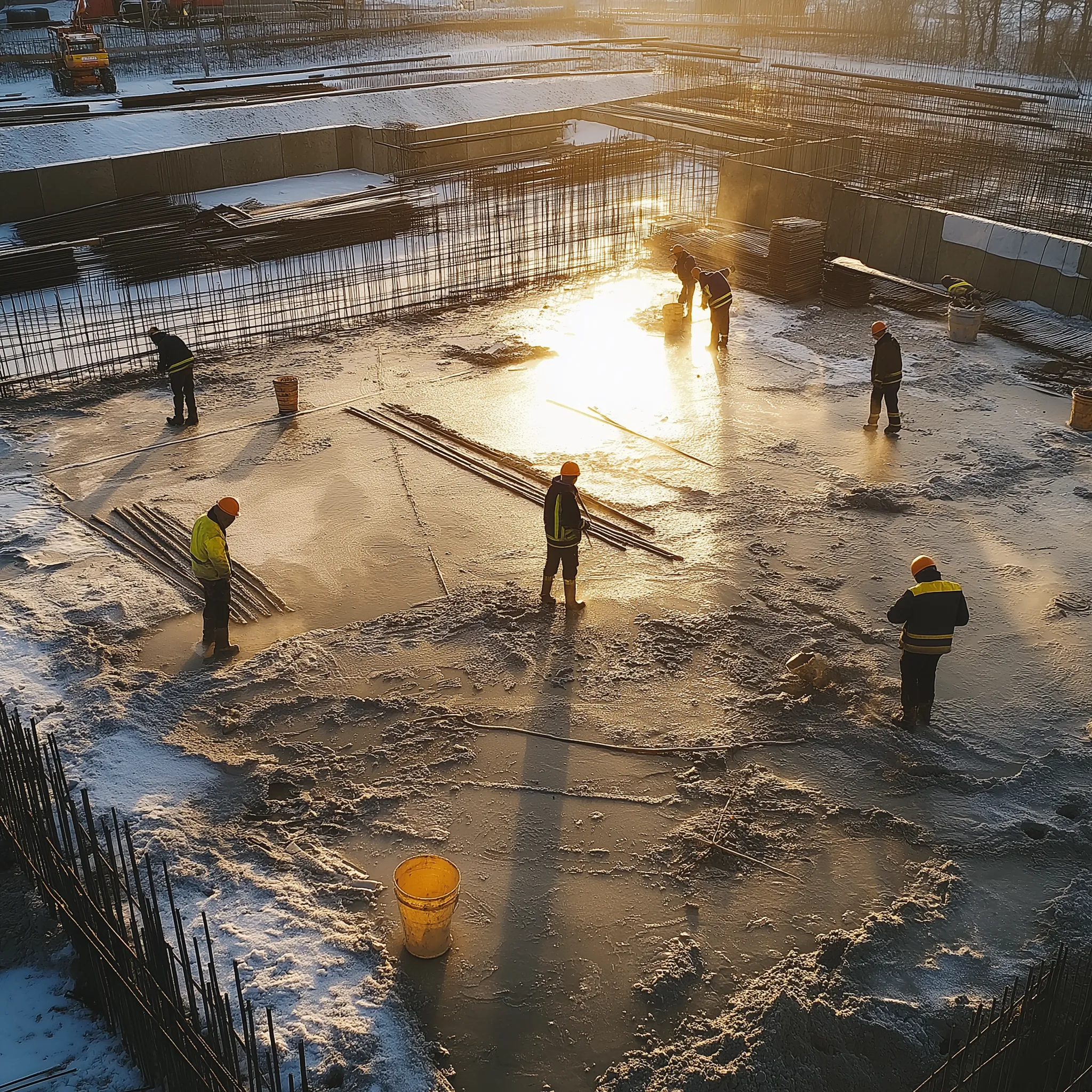Driveways can experience a variety of issues, such as scaling, pop-outs, dusting, and crazing.
Pop-outs: Pop-outs occur when unsound materials in the coarse aggregate deteriorate due to moisture absorption. This causes swelling and produces internal pressures that rupture the concrete, leading to small portions of the concrete surface breaking away and leaving shallow depressions. Freezing and thawing on exterior flatwork can exacerbate the problem.
Scaling: Scaling involves the peeling off of the top 1/16 to 1/8 inch of the concrete surface. It is often caused by freezing and thawing in damp environments, especially in the presence of deicing salts. Pop-outs can form when unsound aggregate particles settle, forcing water and air to the surface and creating voids between the surface mortar and the concrete underneath. This process can lead to progressive scaling.
Dusting: Dusting happens when the concrete surface dries without hardening, resulting in a fine powdery material on the surface. One potential cause is carbon dioxide released by heaters, which can react chemically with the concrete and prevent the surface from drying completely. Improper curing and finishing practices can also contribute to a slab prone to dusting.
Crazing: Crazing refers to the appearance of numerous fine cracks on the concrete surface, forming a hexagonal or octagonal pattern similar to a crushed eggshell. These cracks are typically shallow, and the patterns are relatively small.
Causes of Driveway Problems: Pop-outs, scaling, dusting, and crazing can be attributed to one or more of the following factors:
• Poor mix design
• Concrete mix being too wet on the job site
• Improper placement and finishing
• Inadequate curing
• Poorly maintained or applied sealers
Recipe for a Gold Medal Driveway
A top-quality driveway requires good concrete, proper finishing, curing, and sealing of the surface.
Good Concrete:
• Air entrainment: 5-8% on average
• Low water/cement ratio
• Low slump: 4-5 inches
• Selection of proper aggregate
Proper Finishing:
• Avoid wet mixes for ease of placement
• Remove bleed water
• Do not close the surface too early
• Do not overwork the surface
• Protect from rain
• Use finishing aid instead of water
Curing Methods for Concrete Driveways
Curing is a crucial step in ensuring the longevity and quality of concrete driveways. There are different methods for curing, including:
1. Wet Cure – Minimum of 7 Days: Wet curing requires the surface to be completely covered for a minimum of 3-7 days, with the first seven days being the most critical for determining the concrete’s ultimate quality. Due to the logistics of this method, it is not often used in today’s fast-paced construction.
2. Membrane Curing Compound: Membrane curing compounds are sprayed on immediately after finishing. Once dried overnight, construction traffic may resume regular activities. Some membrane cures are designed to be permanent (curing and sealing), while others break down after 28 days (resins).
3. Non-Membrane Curing Compound: Non-membrane curing compounds, such as sodium silicates, do not create a membrane but provide good moisture retention and dustproofing qualities.
Sealing the Surface
1. Cure & Seal: Acrylic curing compounds are commonly referred to as “Cure and Seal.” Acrylics are available in water-based and solvent-based forms and provide a lasting membrane that seals the concrete. This curing and sealing membrane prevents dusting and staining while giving a glossy appearance to the finished slab.
2. High Solid Acrylic Sealer: High solid acrylic sealers create a high gloss, high-performance, ultraviolet stable sealing compound for exposed aggregate and exterior concrete.
3. Penetrating Silane/Siloxane: Silane/Siloxane is a deep-penetrating sealer designed for maximum protection of concrete surfaces, decks, parking structures, etc., against the corrosive effects of deicing salts, moisture, and weathering. This type of sealer is available in 20% and 40% water-based and 40% solvent-based options. The 40% version complies with NCHRP #244 and is V.O.C. compliant.
4. Maintenance: Once the surface has been sealed properly, it should be recoated with the same sealing compound at intervals according to the manufacturer’s recommendations. Deicing salts and other corrosive contaminants should not be allowed to remain on the surface indefinitely. The slab surface should be cleaned regularly with water and mild detergents.
Curing Compound Options
Good: Cure Hard
• Sodium silicate cure and dustproofer
• Provides a non-membrane cure
• Will not affect any secondary topping or coatings
Better: SpecRez
• A water-based liquid membrane-forming, hydrocarbon resin-based curing compound
• Controls curing for strong and durable concrete
• V.O.C. compliant
• ASTM C-309
Best: Crystal Rez
• A high solids dissipating type cure designed to break down when exposed to sunlight, staying clear during the dissipation process
• Allows easy penetration of secondary sealers and toppings after dissipation
• ASTM C-309
Curing and Sealing Options for Concrete Driveways
Good: Cure & Seal WB
Better: Cure & Seal 25
Best: Cure & Seal 25 UV
Cure & Seal WB:
• V.O.C Compliant, sprayable, water-based acrylic polymer resin
• Formulated for curing, hardening, dustproofing, and sealing freshly placed concrete
• Provides maximum protection against common staining materials
• Reduces slab cleanup costs by up to 50%
Cure & Seal 25:
• High solids, water-clear acrylic copolymer
• Cures, seals, dustproofs, and hardens freshly cast concrete
• High gloss film
• Provides maximum protection against common staining materials
• Easy to recoat for maintenance
Cure & Seal UV:
• High solids, clear acrylic copolymer curing compound, sealer, dustproofer, and hardener
• ASTM C-1315, Class A
• Designed for optimum color stability and moisture retention
• V.O.C Compliant
• Easy to recoat
Sealers
Good: Surface Shine or SpecShield SB
Better: SpecSilane 20 WB
Best: SpecSilane 40 WB
Surface Shine or Spec Shield:
• Surface Shine for a high gloss
• SpecShield for a natural appearance
SpecSilane 20 WB:
• Deep penetrating sealer
• Designed to protect concrete surfaces, parking structures, driveways, etc.
• Protects against corrosive effects of deicing salts, moisture, and weathering
• Prevents spalling and deterioration
Spec Silane 40 WB:
• Water-based, deep penetrating sealer
• Designed to protect concrete surfaces, parking structures, driveways, etc.
• Protects against corrosive effects of deicing salts, moisture, and weathering
• Prevents spalling and deterioration
• V.O.C Compliant
Other Products
Surface Shine WB: Surface Shine WB is a water-based polymerized interior/exterior non-yellowing sealer designed for all concrete surfaces. Surface Shine WB adds a satin finish and additional protection from liquid penetration. V.O.C. Compliant.
SpecPatch: Spec Patch is a single-component, cement-based, polymer-modified patching and repair product for concrete floors, walls, precast, tilt-up panels, masonry, and stucco. Spec Patch can be applied from featheredge to 1 inch per lift and used for horizontal, vertical, and overhead surfaces.
RepCon H: RepCon H is a specially designed, single-component patching and structural repair product. It is semi-self-leveling and can be used as either an underlayment or for overlay applications of 1/8” – 2”. The extended work time of 40 minutes allows for user-friendly repair, and high early strength allows for 1500 PSI in three hours after placement to reduce downtime.
Evaporation Retardant & Finishing Aid – SpecFilm:
SpecFilm is designed to help in rapid drying conditions and reduce sticky troweling caused by surface tension. SpecFilm should be a standard product used on all slabs. Attributes of SpecFilm include the following:
• Creates a monomolecular film retarding moisture loss from the concrete surface when applied over fresh concrete
• Decreases plastic shrinkage cracks in high-temperature conditions
• Allows easier finishing of slab without reducing water-cement ratio
• Does not inhibit bonding of curing compounds or sealer placement
• Provides additional time for applying surface hardeners, properly finishing, and later curing the slab
The Current System (Common but Not Working)
1. Wet mix or bad mix design
2. Poor finishing techniques
3. Poly-covered driveway for maybe 24 hours
4. Medium solids acrylic cure & seal applied once
5. Re-application required every year
The SpecChem System
Good:
1. Properly place and finish concrete
2. Use SpecFilm instead of water for finishing concrete
3. After final trowel, apply Cure & Seal UV at 300 sq ft per gallon to driveway and garage
4. In 3 days, if surface is hard & dry, apply a second thin coat at 400-600 sq ft per gallon
Better:
1. Properly place and finish concrete using Specfilm
2. Apply Spec Rez at 300 sq ft per gallon
3. After 45-60 days, check if Spec Rez has dissipated
4. If Spec Rez remains, use a water blaster to remove
5. Wait until the surface is dry
6. Apply Surface Shine for high gloss, SpecShield, or Silane 20 WB for a natural appearance to driveway and garage
Best:
1. Properly place and finish concrete using SpecFilm
2. Apply Crystal Rez curing compound after final trowel at 300 sq ft per gallon
3. After 45-60 days, test for dissipation
4. Water blast surface and allow to dry
5. Apply Silane 40 V.O.C on driveway and garage
Maintenance & Other Tips:
• After 45 days, install joint sealant in all expansion joints
• If acrylic coating was used, clean the surface and reapply a light coat every year
• If penetrating sealer Spec Shield or Silane 20 WB was used, clean and reapply every 2-4 years
• If Silane 40 V.O.C was used, clean and reapply every 4-6 years
What to do when the driveway is already damaged?
Scaling:
• Most scaling is caused by concrete or finishing techniques, not salt intrusion
• If scaling is not severe, remove the surface by blasting, scabbler, or another method to expose sound concrete
• Apply RepCon H
• Seal with Surface Shine WB
Pop-Outs:
• These types of damage usually occur due to salt intrusion rusting the rebar
• If the percentage of the area is small enough, a deep patch may be cost-effective compared to replacing the entire driveway
• If the depth is 1/8” – 1”, apply Spec Patch
• Follow ACI guidelines for concrete repair
• Seal with Surface Shine WB
Surface Preparation:
• Remove all deteriorated concrete
• Remove any remaining dirt, oil, cures, etc.
• Vertically cut a recessed edge outlining the area to be repaired
• All bonding surfaces should have an aggregate-fractured profile +/- 1/16th inch
• Ensure 1” clearance under reinforcing steel
• Saturate prepared surface with clean water; leave no standing water so that it is considered “Saturated-surface dry”
Deep Concrete Repair:
• Apply RepCon H 1/8” – 2”
• Apply OverCrete on the surface for a decorative finish
Severe Delamination or Total Failure:
• Pop-out of more than 50% of the area
• Typically more cost-effective to remove existing concrete and re-pour slab
Key Components of a High-Quality Driveway:
• High-quality concrete
• Skilled finishing techniques
• Proper curing
• High-quality sealer
• Regular maintenance





